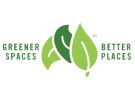The NSW Department of Planning, Industry and Environment (DPIE) have announced a draft design guide as part of the first ever Greener Places policy, to inform planning controls at every level of urban development across state and local government.
Advocates from Greener Spaces Better Places - a national initiative that brings together government, universities, not-for-profit, business and industry to increase and improve green space in our towns and cities - welcome the aptly named draft policy announcement, which will see metrics outlined to guide local planners, including the creation of open spaces within 200m of homes in high density areas, 400m from schools and workplaces, with recreational land being more than 15m wide, and at least 150m for sporting areas.
Associate Professor Paul Osmond, director of UNSW sustainable built environment program, said the guidelines provide great opportunities for interactive landscapes such as urban farms and community gardens, and habitat corridors for wildlife with the transformation of under-loved linear spaces.
“A green vision is great. A green reality will be in the implementation of policy to practice, so let’s ensure this is not a great policy which languishes on department shelves,” said AP Osmond.
Urban strategist Vanessa Trowell said, “The timely release of the Greener Places guidelines supports the heightened awareness of the community for the vital and valued role of green public places in our cities. Aligned with the tremendous current investment in transport infrastructure, investment in green infrastructure will ensure interconnected, regenerative and prosperous outcomes for people and places across the state.”
A recent poll by Greener Spaces Better Places of urban local government confirmed the majority (87%) had seen a positive shift in sentiment towards green spaces during the COVID-19 lockdown.
Expert on the estranged human-nature relationship and its impact on child development, Professor Tonia Gray, Western Sydney University, believes the policy opens up the possibility of a greener future for happier, healthier children, particularly in dense urban areas. There’s a growing body of research that confirms improvements in social skills, imagination, creativity, teamwork, concentration and behaviour in children are just some of the varied benefits to increasing and improving green space with more opportunities for unstructured play outside.
Professor Gray said, “In the last few decades, we have become an indoor society and disengaged from the natural world. This has manifested in the way we plan and design our cities, resulting in a range of adverse effects to our health and wellbeing.
We know there’s a great deal of inequity when it comes to access to green space, as shown in the last Greener Spaces Better Places report ‘Where should all the trees go?’, which benchmarked tree canopy cover in our towns and cities."
Professor Gray said it’s wonderful to see the green-first planning approach outlined in the Greener Places policy to create more opportunities for our children to play outside. Currently, we know just two in three children spend under an hour playing outdoors each day in Australia.
“We must shift these numbers in order to maximise the overwhelming array of benefits our children can reap by spending more time outdoors, and this policy is a great place to start,” said Professor Gray.
While greening our towns and cities is a major step in mitigating the impact of climate change, an important consideration for implementation of the policy at the local government level will be the types of species and locations for tree planting.
Which Plant Where Project Program manager, Leigh Staas, said, “Macquarie University researchers predict that by 2070 70% of commonly planted tree species will struggle to survive and will have a huge impact on how our cities look and feel. With many species already facing habitat stress under climate change, there should be a combined approach between academia, local government and the horticulture industry to be looking at new climate-ready species to green our future urban landscapes, to ensure our green spaces survive, and ultimately thrive.”
The guide is an integral part of the NSW Government’s Greener Places policy to create healthier, more liveable and resilient towns and cities across the state.
The guide is open for submissions until the 7 August 2020.
For more information: Greener Spaces Better Places
Greener Spaces Better Places
hello@greenerspacesbetterplaces.com.au
www.greenerspacesbetterplaces.com.au
